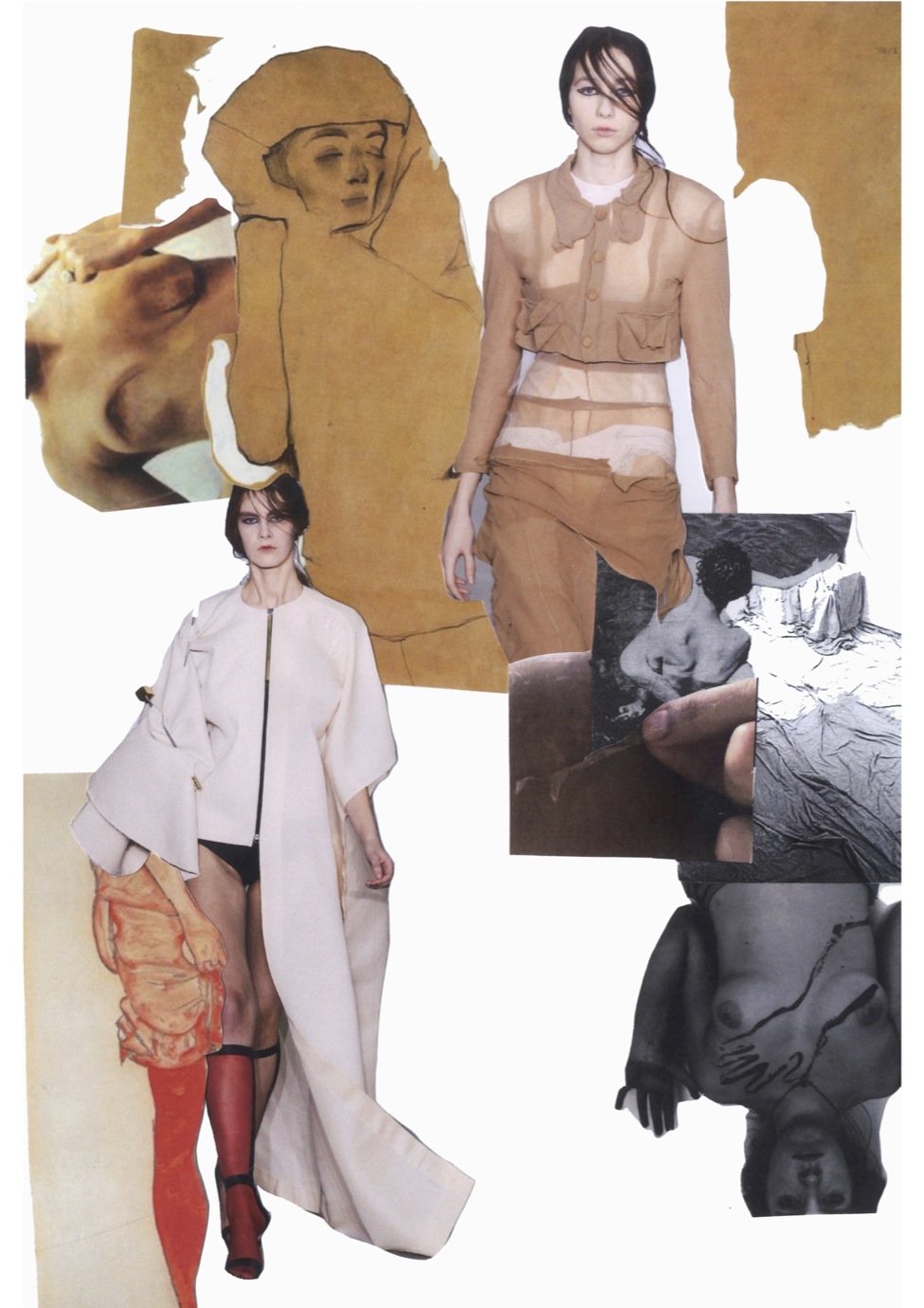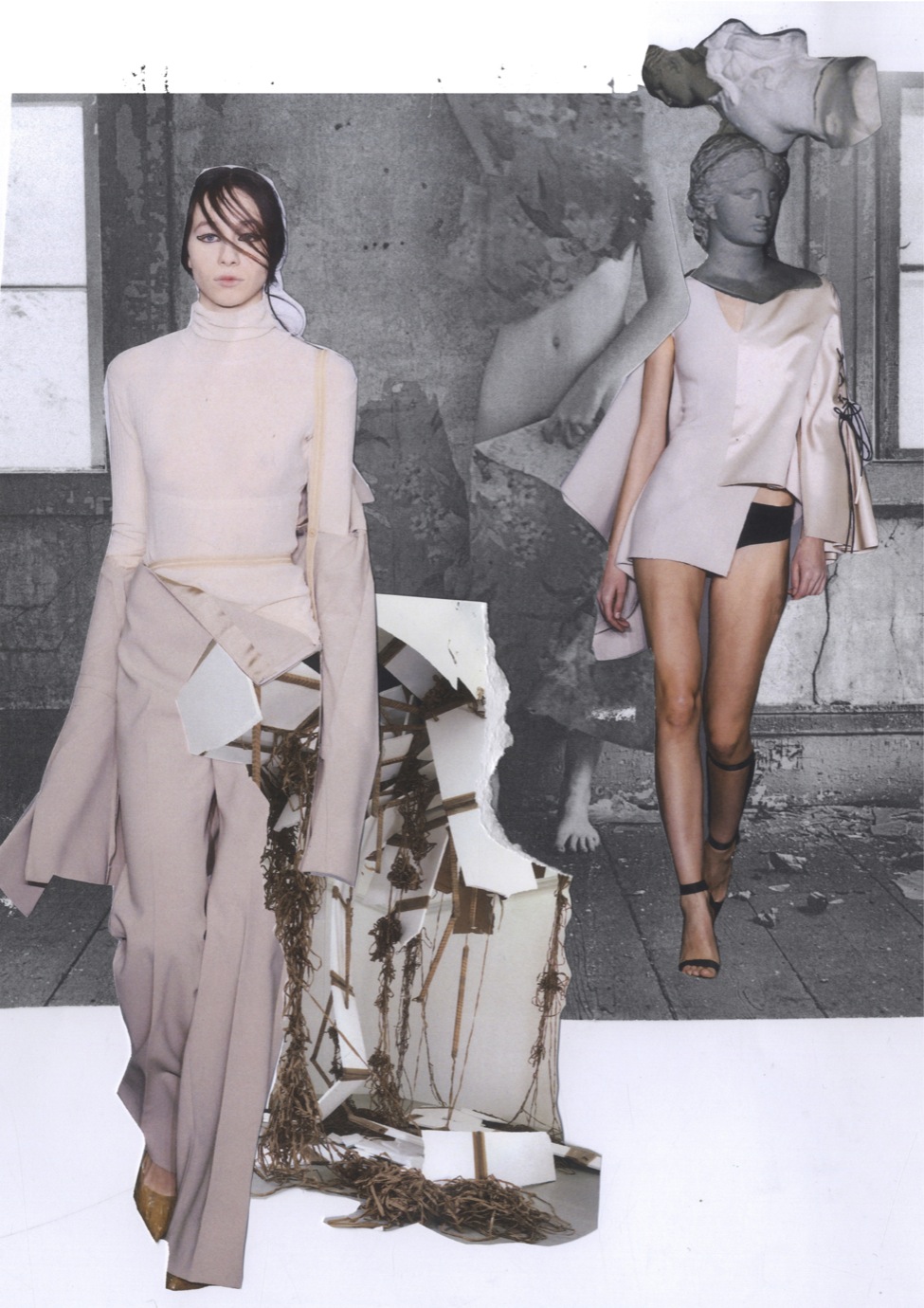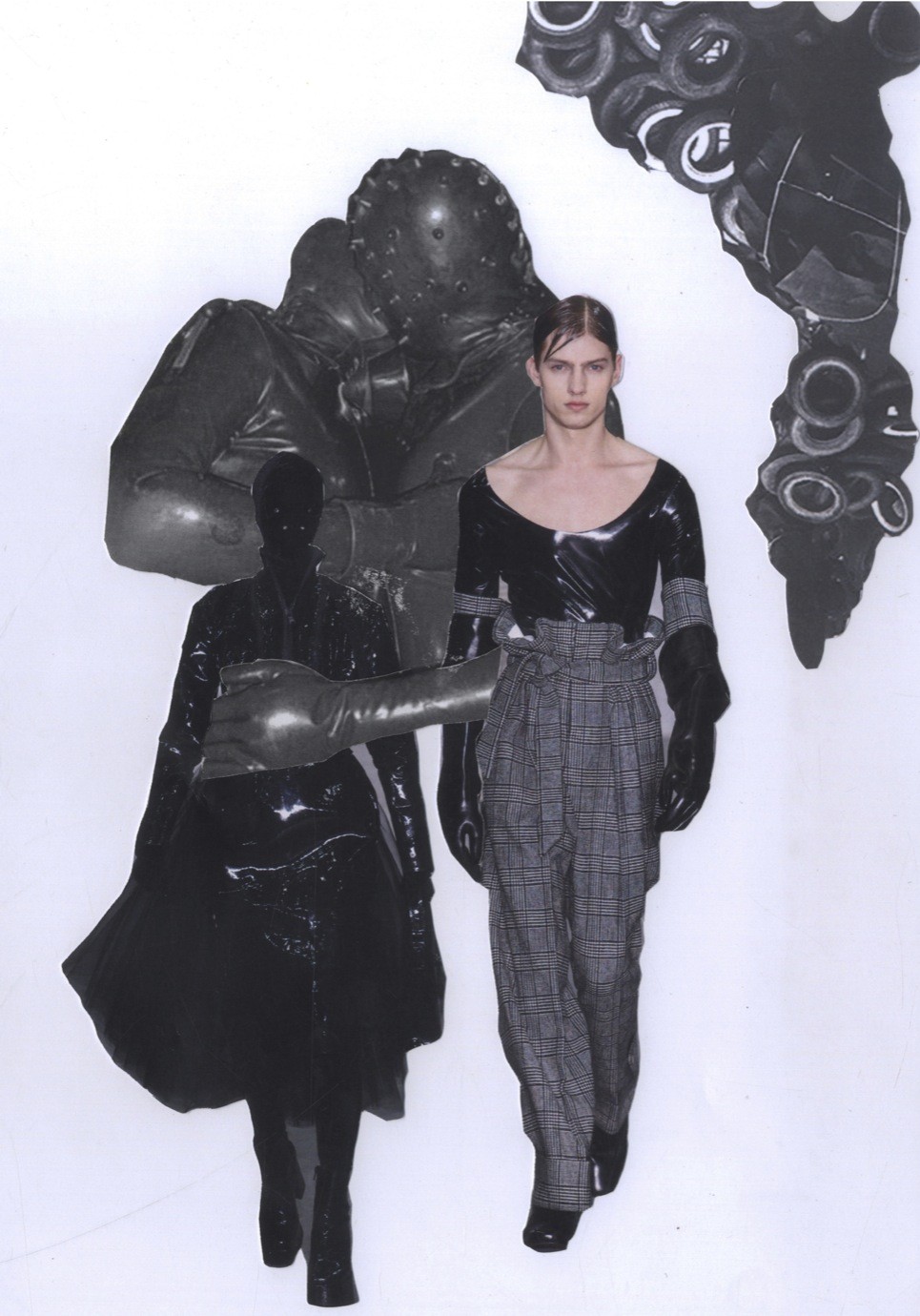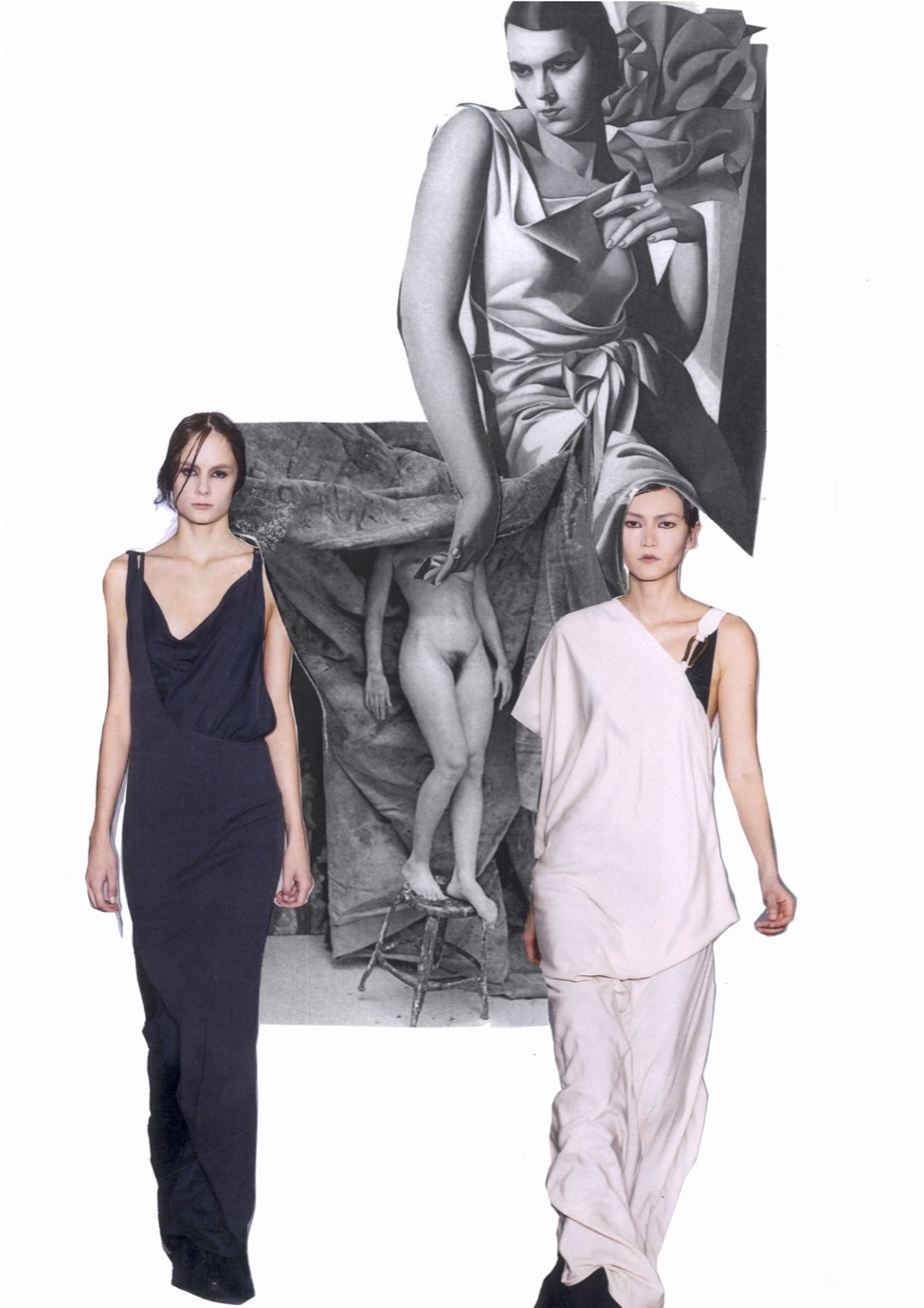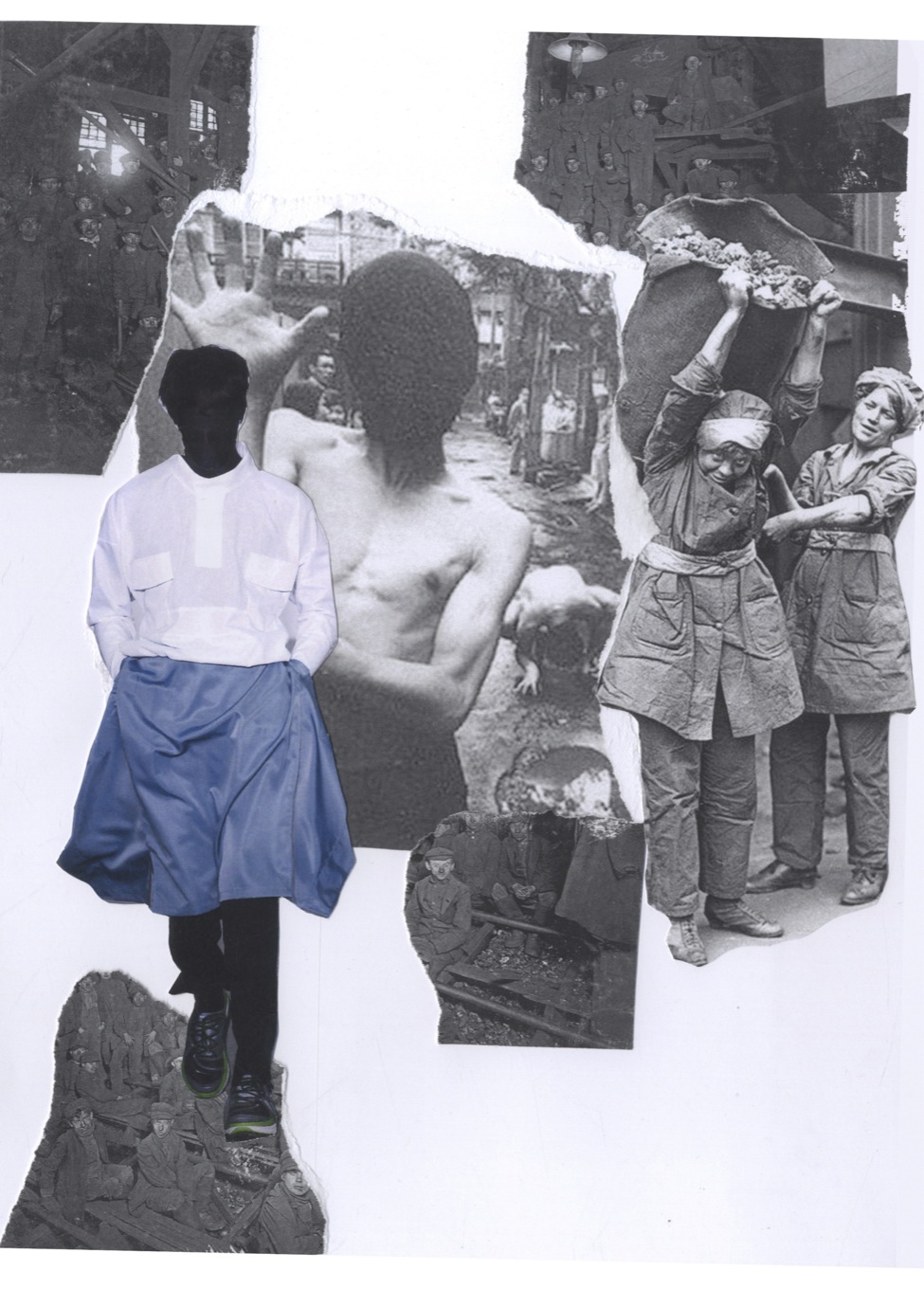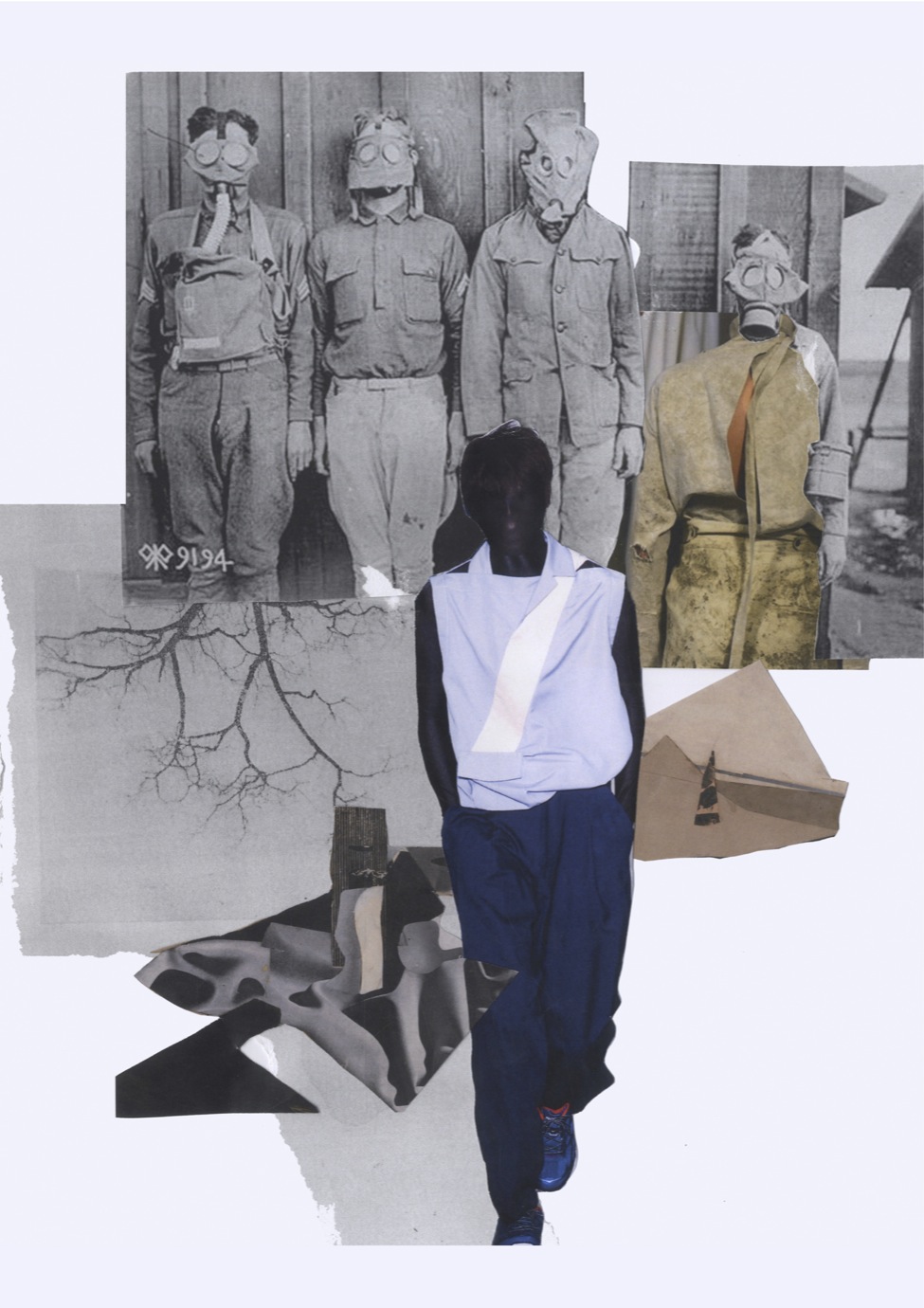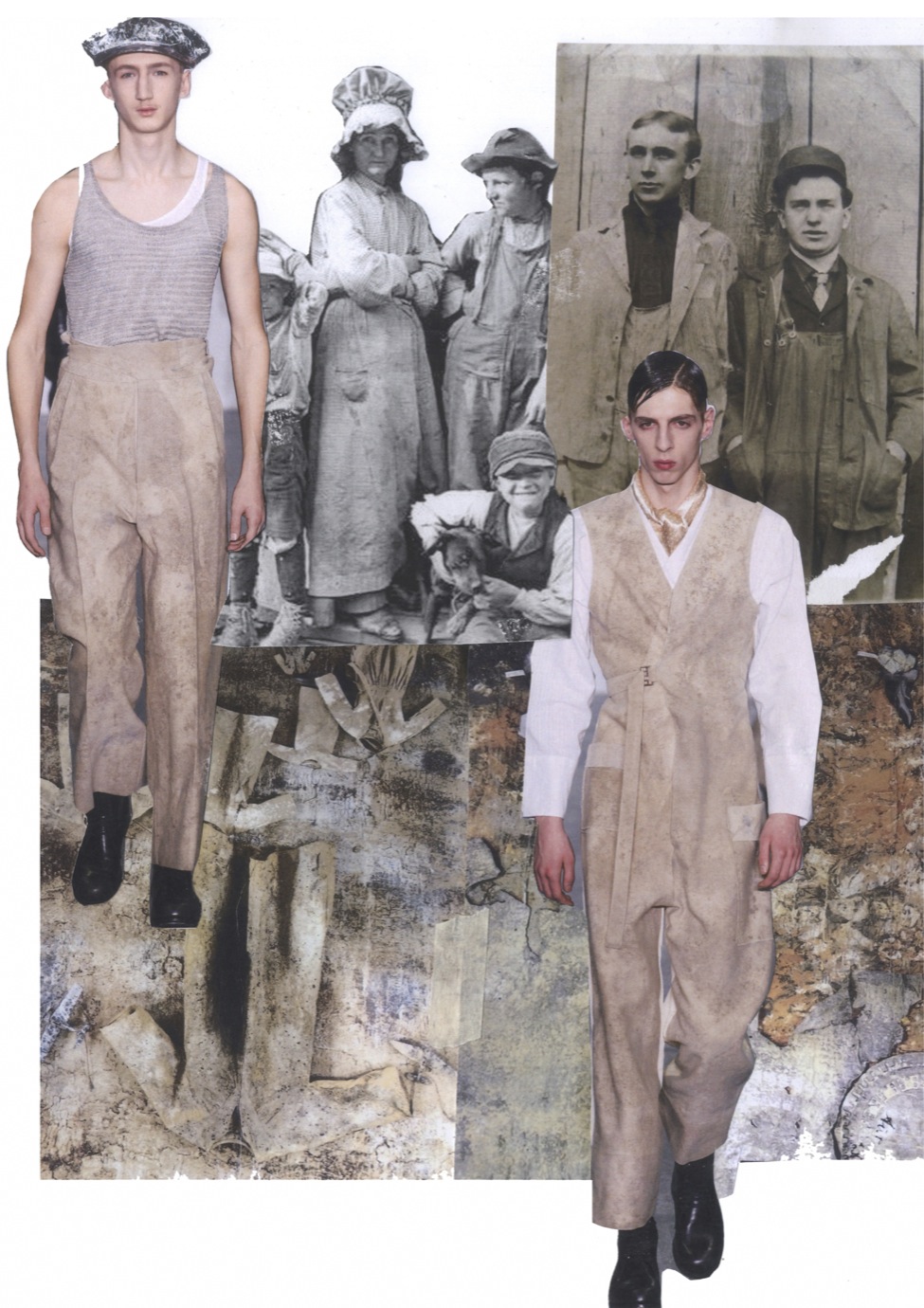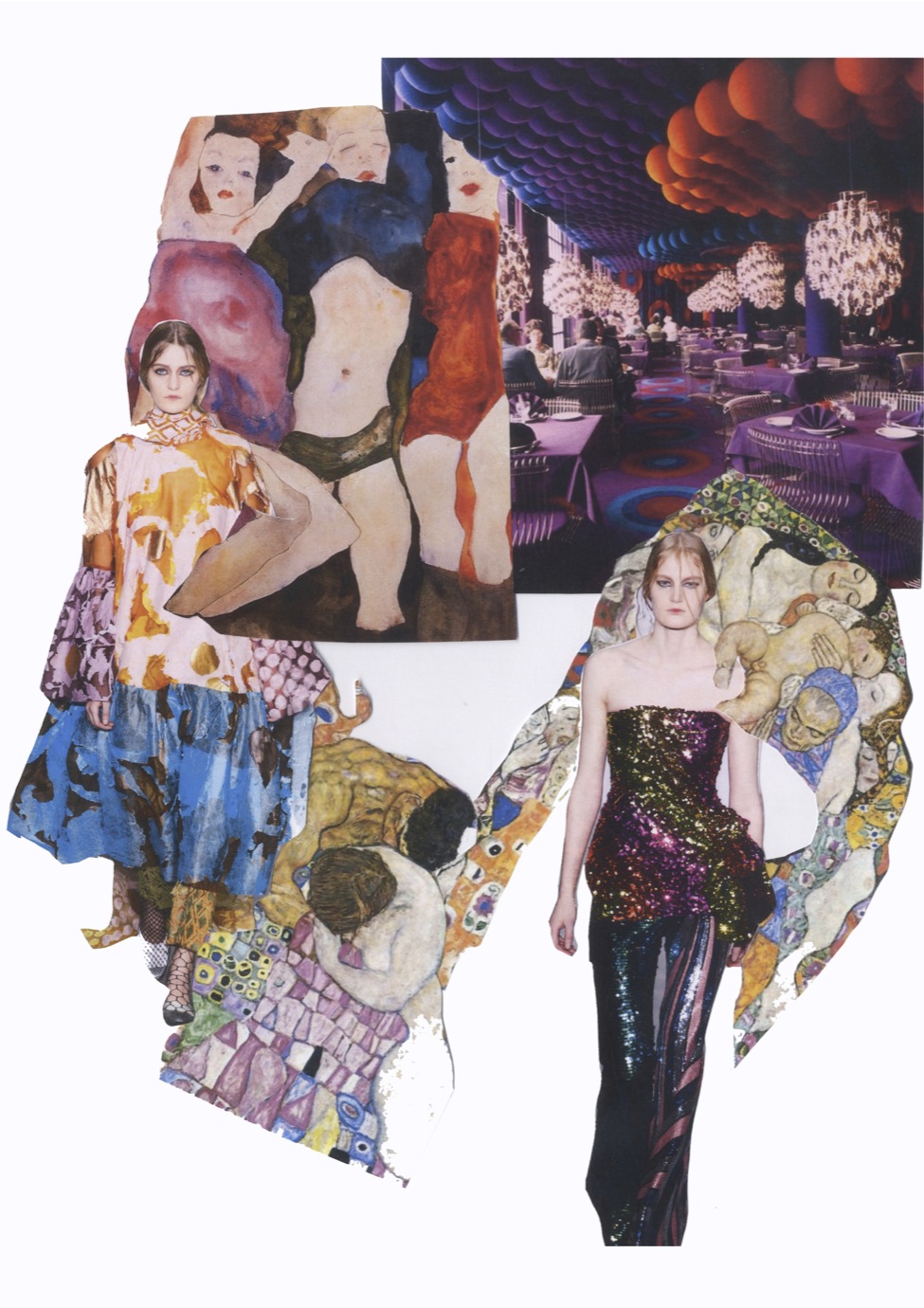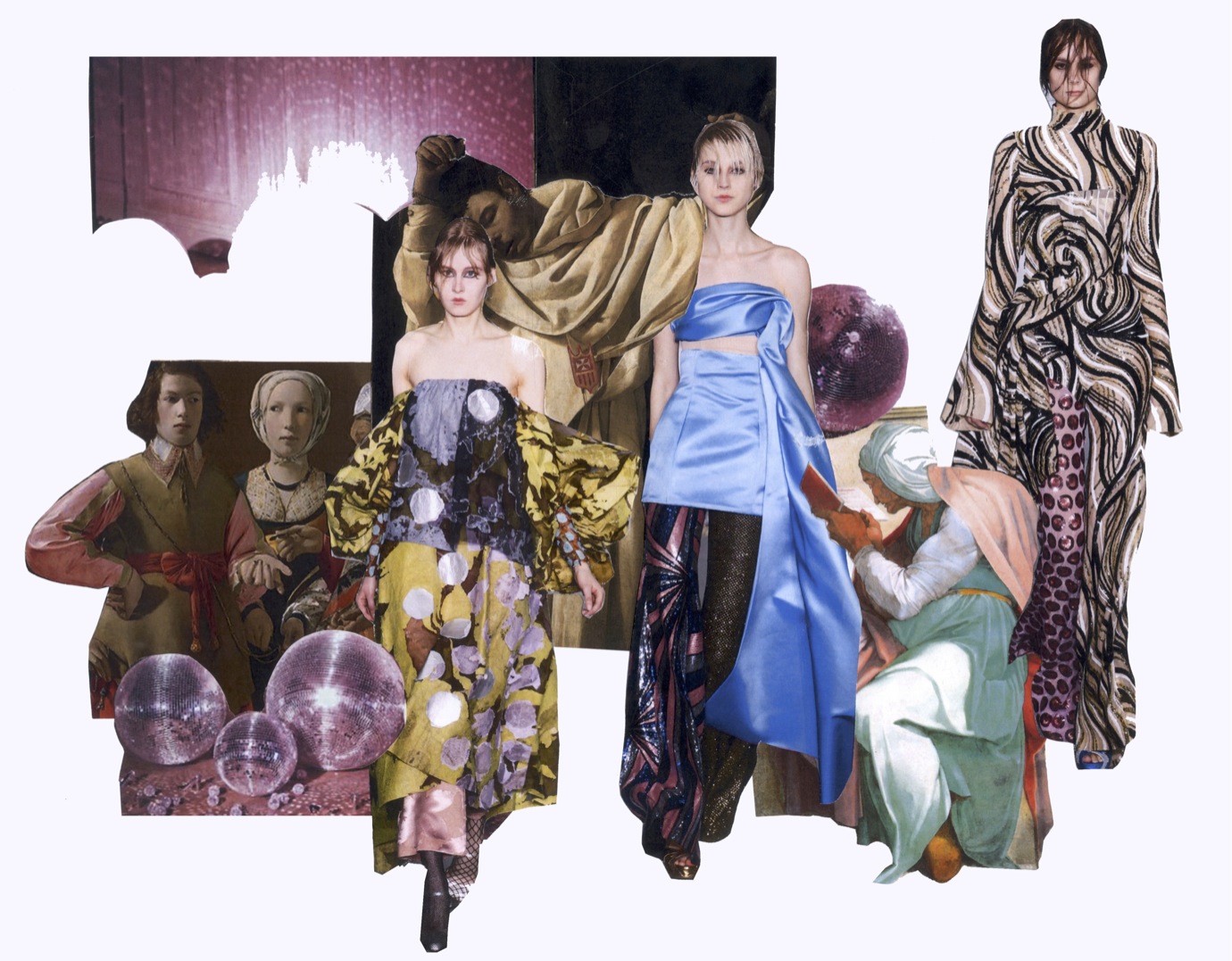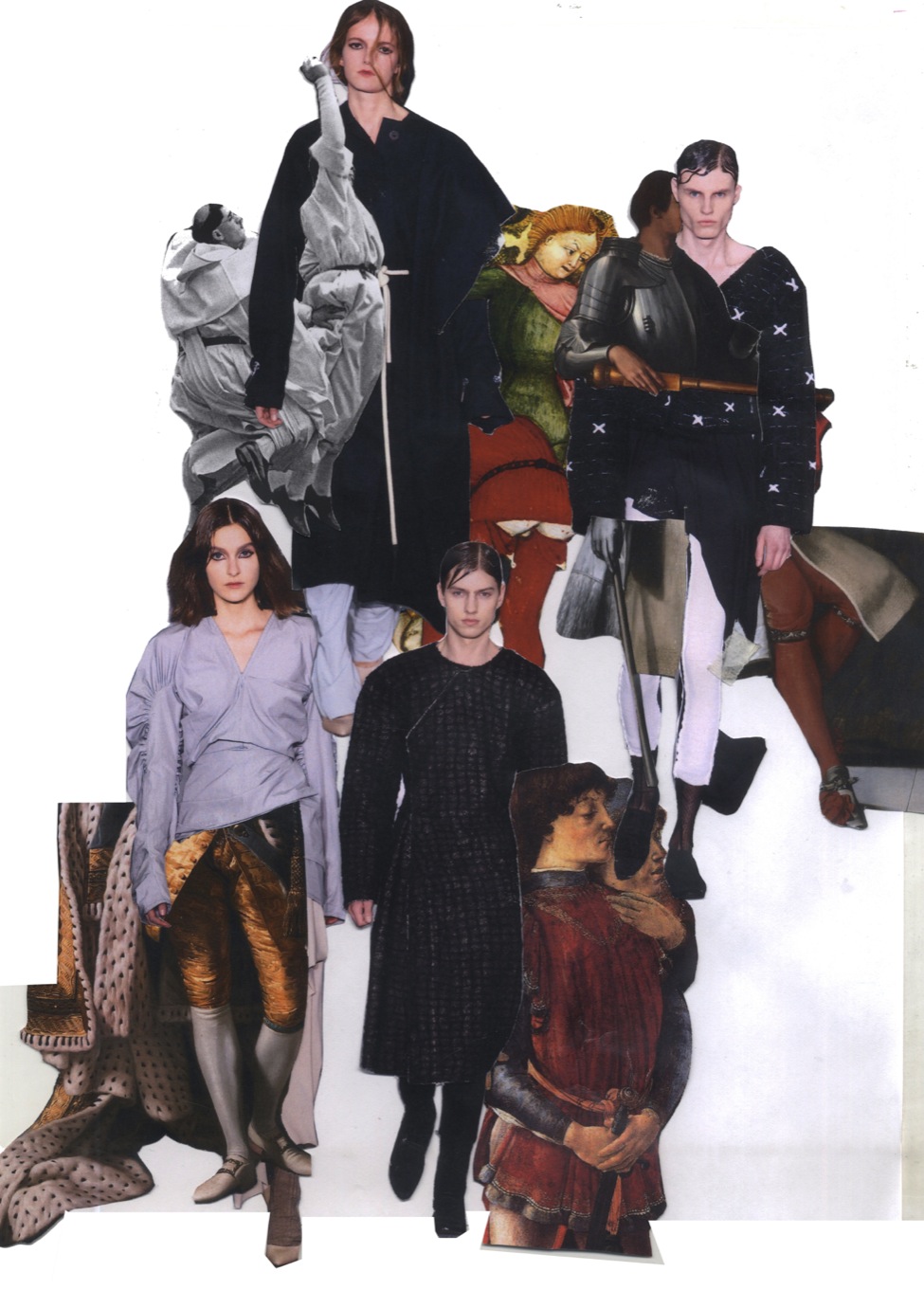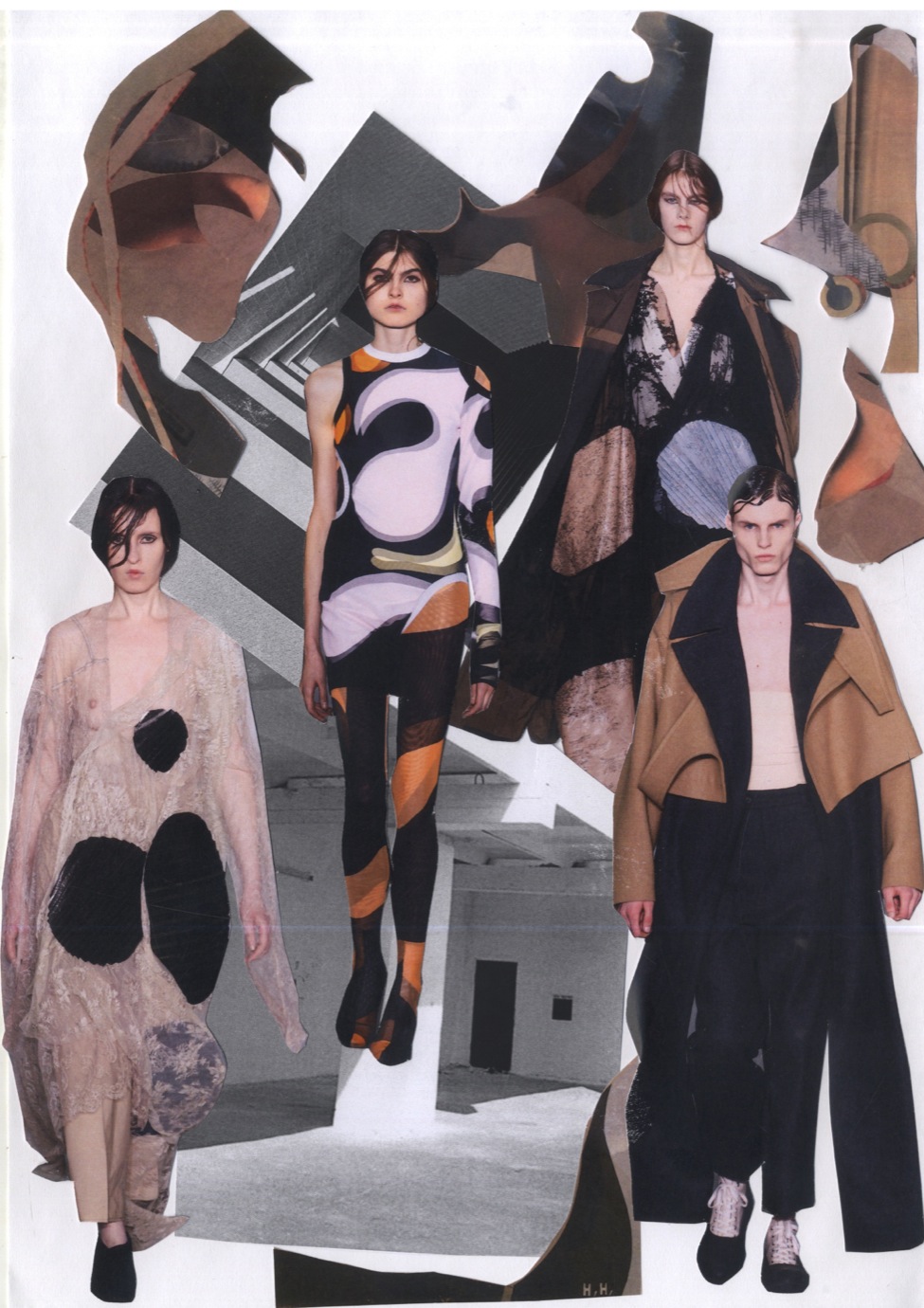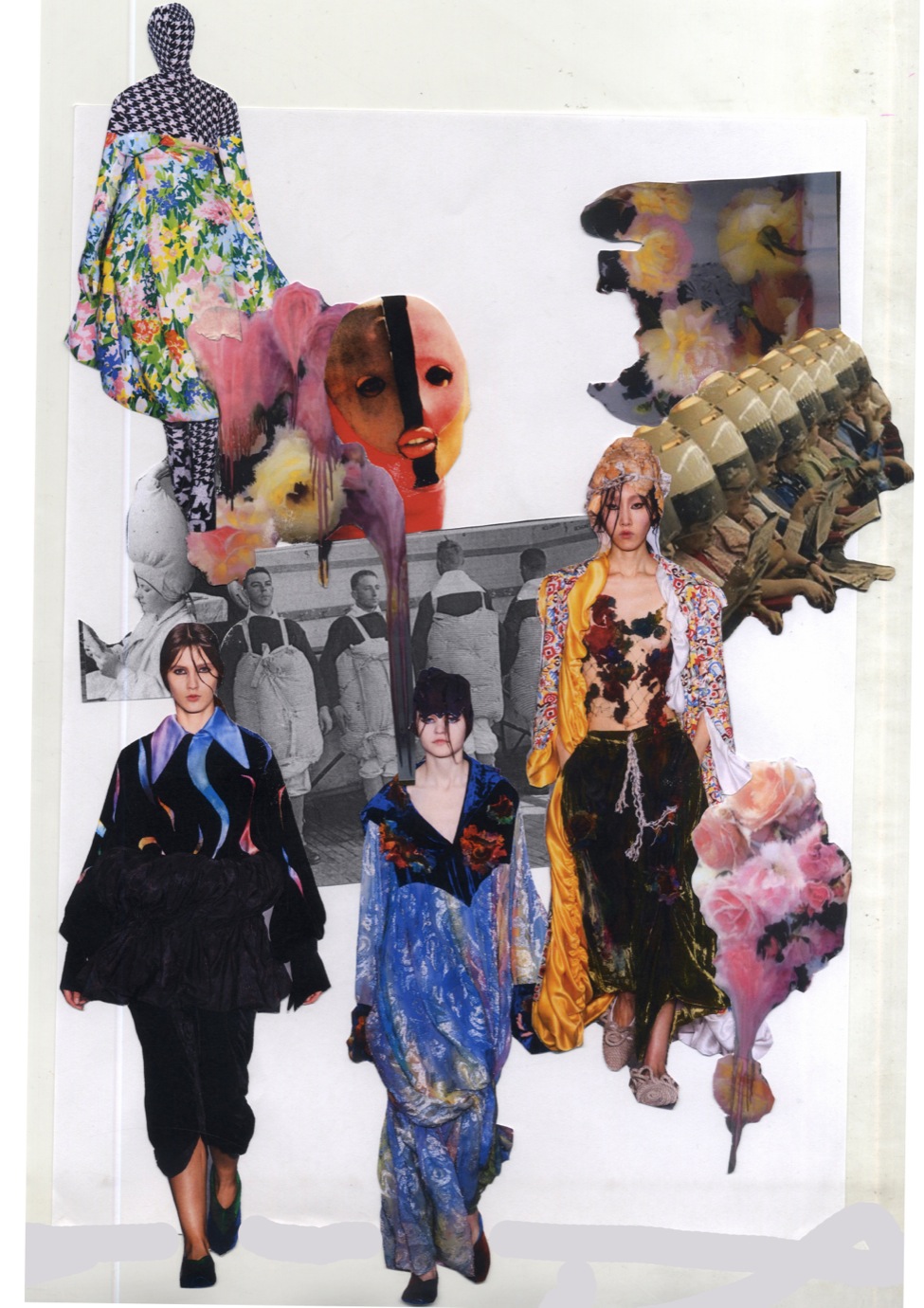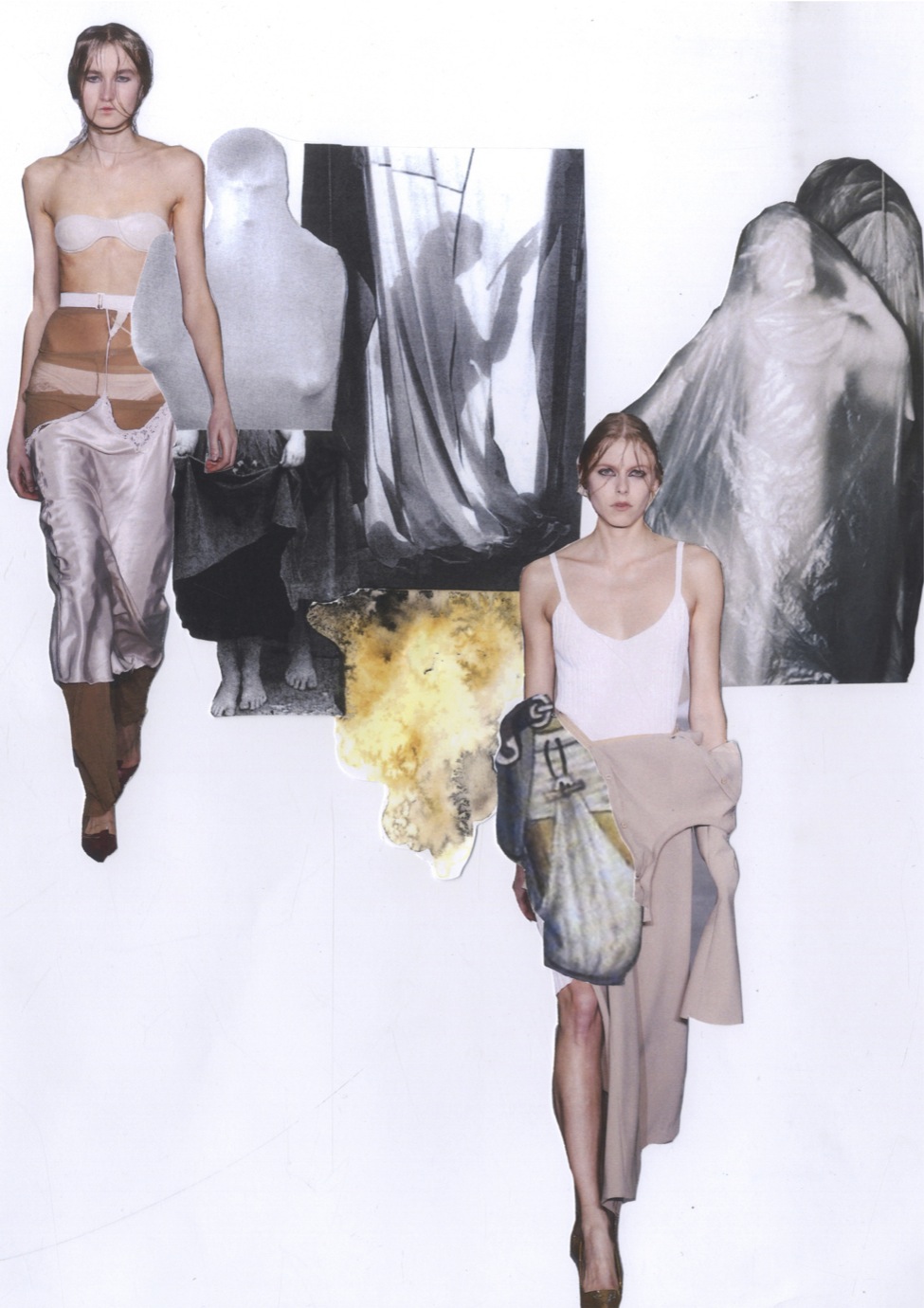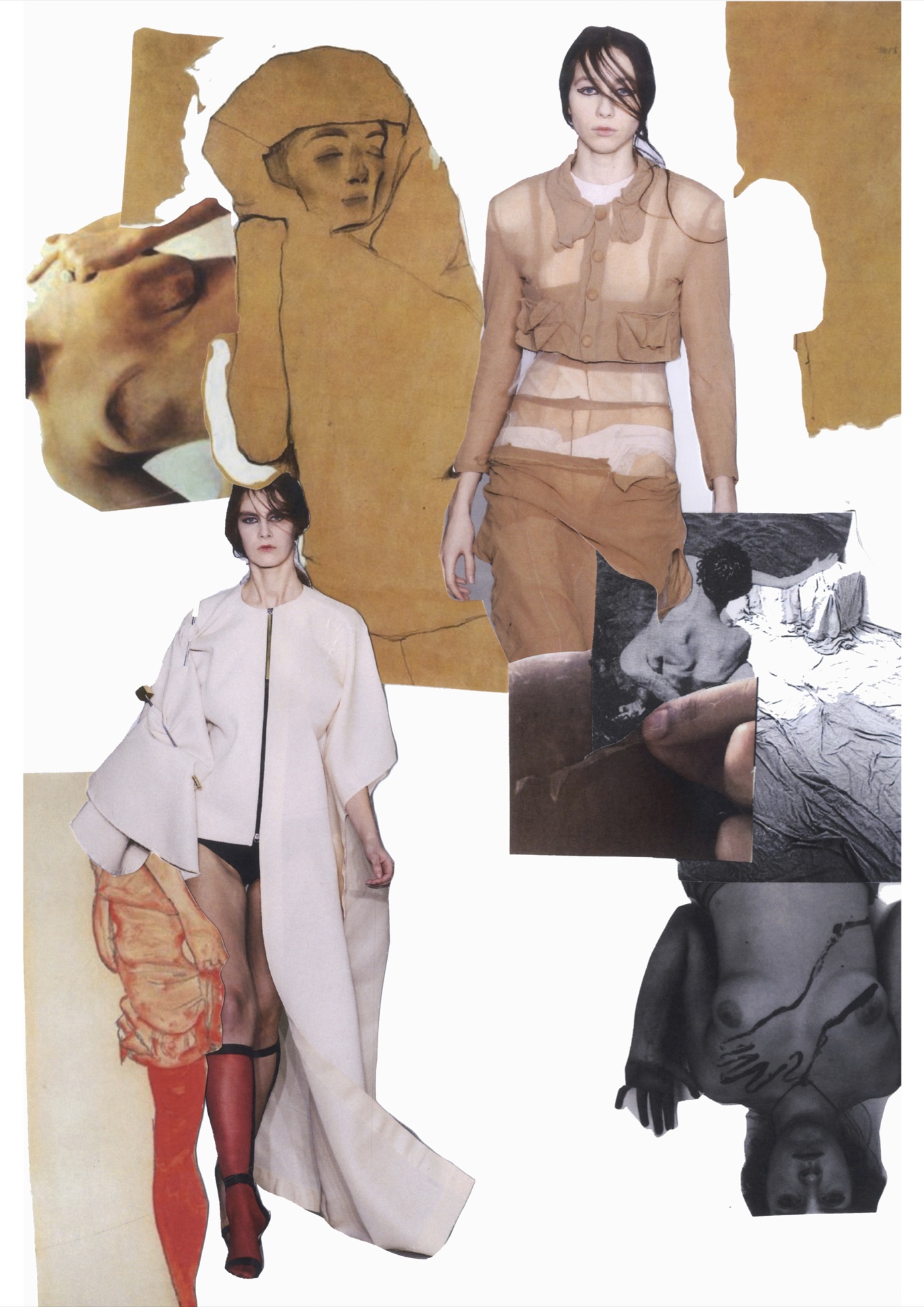Highlights, of course, came from the night’s two L’Oréal Professionnel Creative Award winners. John Skelton’s choice to create a line of entirely sustainable pieces, including wool coats woven in traditional northern English factories, is remarkable given the research this requires, and the fact that students much saddle the expense for these fabrics themselves. The resulting menswear collection of high flat-fronted trousers, deceptively simple shirting and neutral-hued great coats called to mind a romantic, rose-tinted vision of a pre-industrial era.
The night’s seconds winner, knitwear student Harry Evans, took the rising trend for androgyny on the catwalks and ran with it. Ostensibly a menswear line, long ruched dresses in navy and red were worn over ripped skinny jeans and sheer tights, draped tops were gathered to accentuate the waist, and Chanel-style jackets incorporated sparkly yarns and were finished in pink trim.
“ON THE RUNWAY TODAY, THE CLASS OF 2016 LOOKED UNAFRAID.” – SARAH MOWER FOR VOGUE
A fitting opening to the show came from Harry Pontefract, whose collection of deconstructed foundation garments, layered flesh-coloured tights and skirts slipping from hips took a darker tone when followed by Kiko Kostadinov’s male models – morph-suited into anonymity and dressed in business casual for the hipster generation – and Abzal Issabekov’s menacing men with American Psycho-style slicked hair, and sharp suits in bold houndstooth and check, finished with matching elbow-length abattoir gauntlets.
Of course, what makes this show such a draw for a fashion industry fresh from the fatigue and predictability of New York Fashion Week, is the utter freedom these designers have. It is about selling themselves, not their clothes, and so the onus is on showcasing their creativity and technical mastery – not how well their garments would walk down a red carpet.
This was best expressed in Michael Halpern’s range of high glam sequinned flared leotards with bustier tops and clashing prints – the visual impact of which were so strong they drew audible gasps of delight from the audience as they appeared. So too with Joanna Wawrzynczak’s skintight body suits in 60s psychadelica patterns and Richard Quinn’s bold floral prints in futuristic fabrics, which took traditional house coat and prom dress shapes right up to the line of absurdity.
That is not to say, of course, that these designers are not concerned with wearability. Amelie Beluze’s lightweight knits in a subtle sophisticated palette were demurely sexy in the way achieved so well (and to great financial success) by Michael Kors, Chloe and Ralph Lauren. Meanwhile Austin Snyder’s collection of slinky floorlength gowns – in this case toughened with grungy jackets and biker boots – and Emma Bergamin Davys’s pastel patchwork minidresses with billowing pussy bows, wouldn’t look out of place on the latest Hollywood ingenue.
Words by Zoe Dickens
Collages by Antonio Vattev for 1 Granary

